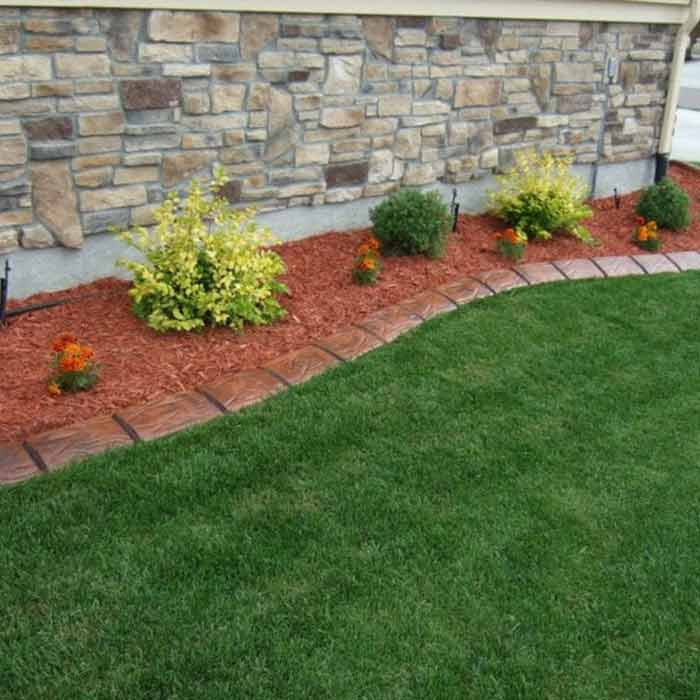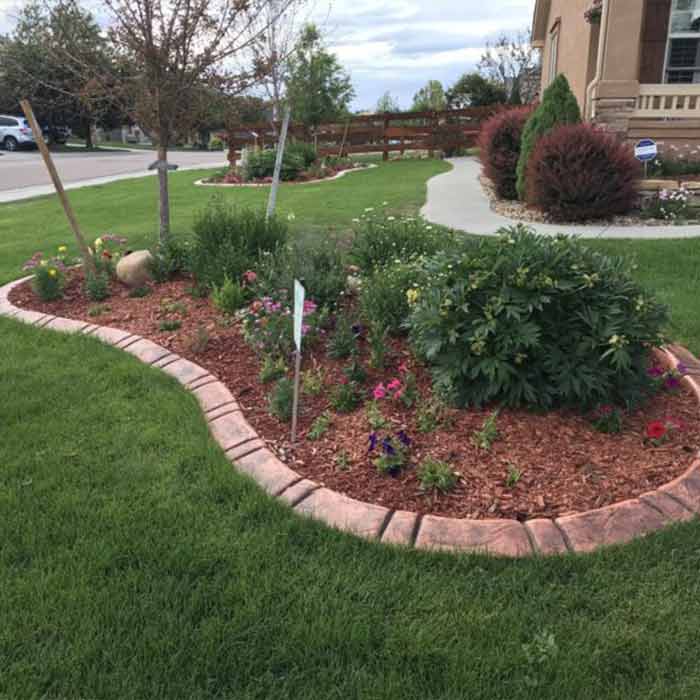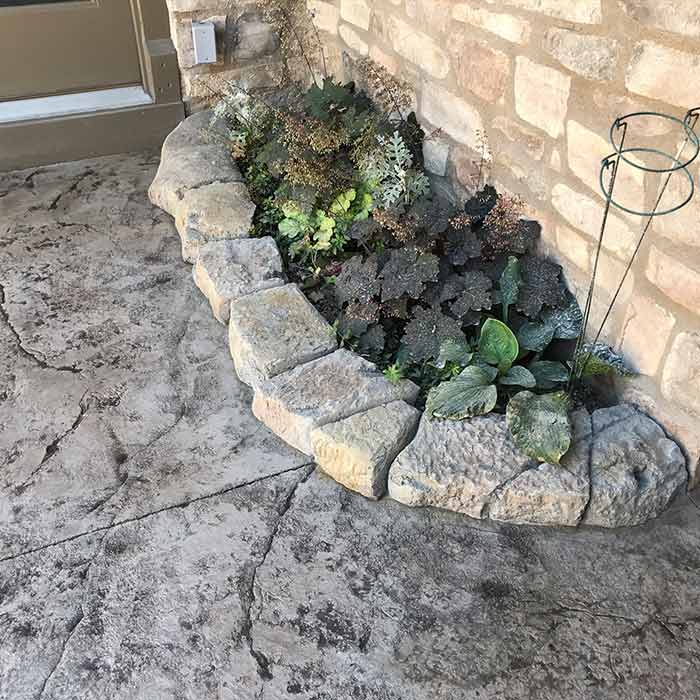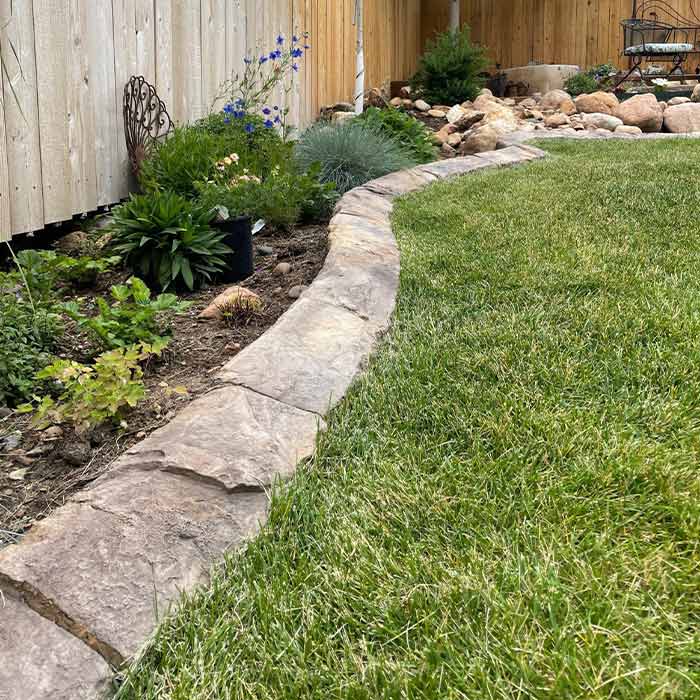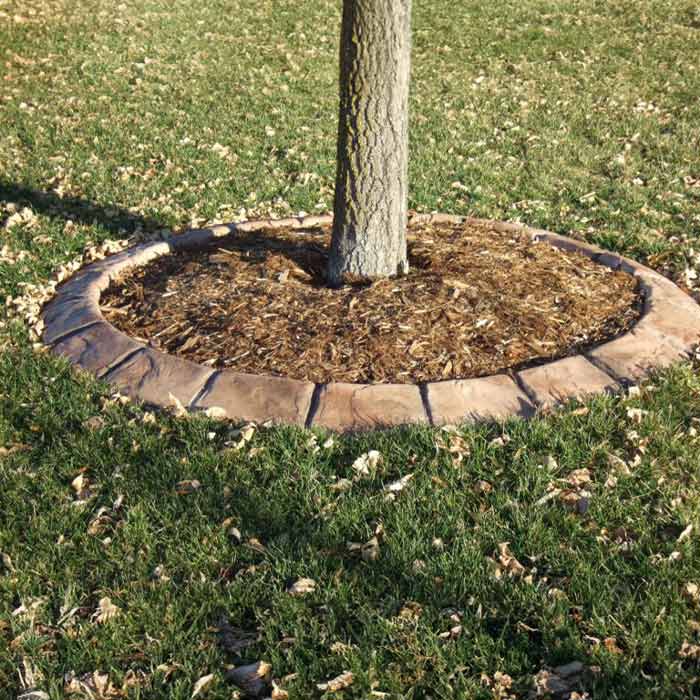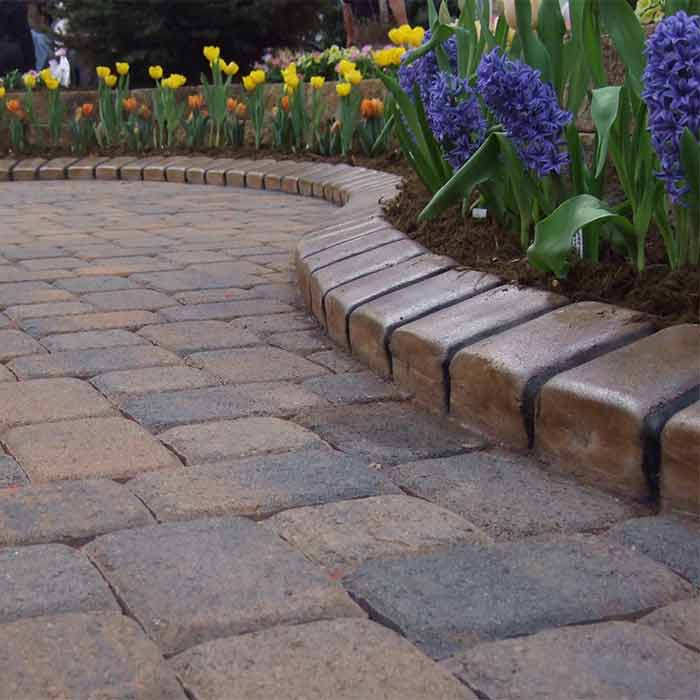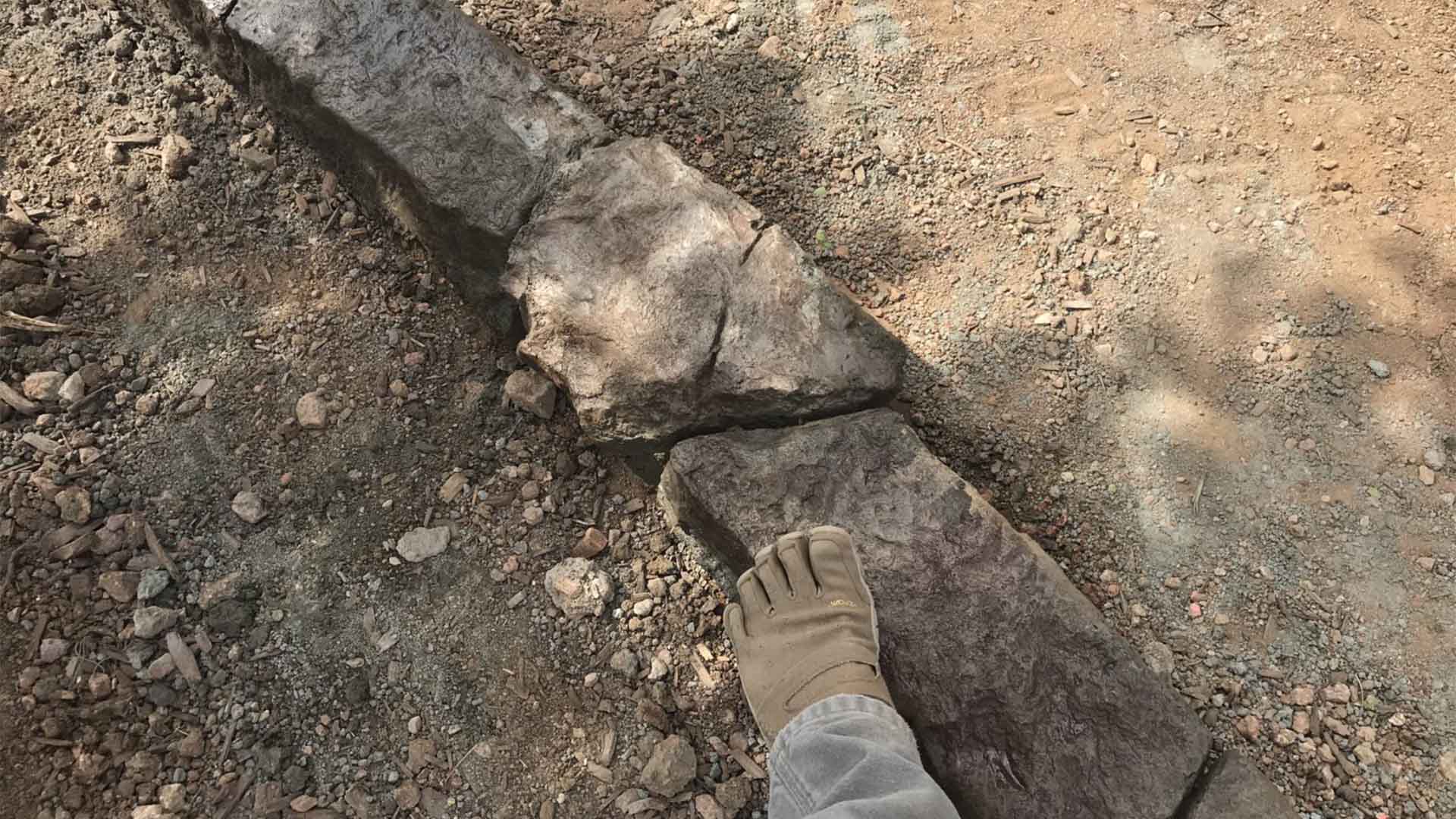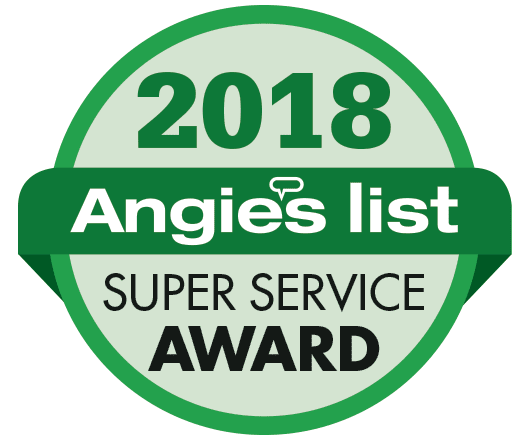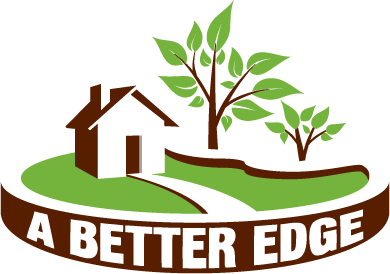Understanding Erosion in Colorado’s Unique Landscape
Colorado’s diverse terrain presents unique challenges when it comes to soil erosion. With elevations ranging from 3,317 feet to over 14,000 feet, our state experiences wide temperature fluctuations, intense seasonal precipitation, and varying soil types from region to region. As a landscape professional with years of experience helping Colorado property owners fix erosion problems, I’ve seen firsthand how untreated slope erosion can damage property values, compromise structural integrity, and create environmental hazards.
Erosion on sloped terrain isn’t just an aesthetic problem—it’s a serious issue that requires professional landscape services to address correctly. In this comprehensive guide, I’ll share proven methods to fix erosion, highlighted by real Colorado case studies demonstrating successful approaches across different environments.
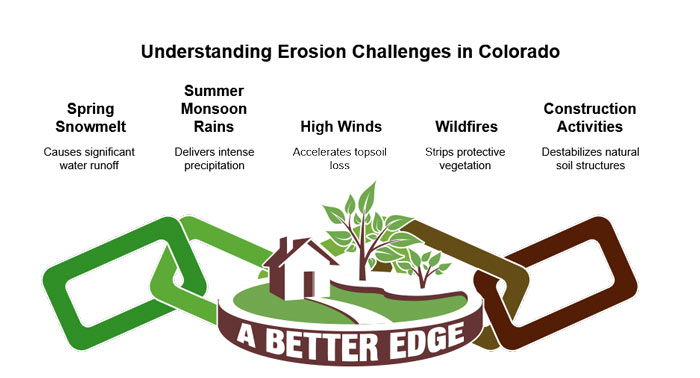
The True Cost of Erosion in Colorado
Before diving into solutions, we must understand what we’re up against. Sloped terrain in Colorado faces several erosion challenges:
- Spring snowmelt creates significant water runoff
- Summer monsoon rains can deliver intense precipitation in short periods
- High winds, especially in open areas, accelerate topsoil loss
- Wildfires strip protective vegetation, exponentially increasing erosion risk
- Construction activities often destabilize natural soil structures
Left untreated, erosion can wash away inches of topsoil annually, undermining foundations, depositing sediment in waterways, and creating progressively worse slope instability. The good news is that proper landscape services and erosion control strategies can rehabilitate even severely eroded slopes.
Comprehensive Solutions to Fix Erosion on Colorado Slopes
Vegetative Solutions: Nature’s Erosion Control
Native Plants: Colorado’s Erosion Fighters
Native vegetation is one of the most sustainable ways to address erosion problems. Plants with extensive root systems create natural anchors in the soil, while their foliage reduces raindrop impact, a significant cause of soil displacement.
For Colorado’s unique climate, these native species have proven most effective for erosion control:
| Plant Type | Species | Benefits | Best Slope Location |
|---|---|---|---|
| Grasses | Blue Grama, Buffalo Grass | Drought-resistant, shallow but dense root system | Full-sun areas, most slopes |
| Groundcovers | Kinnikinnick, Snow-in-Summer | Creates dense matting, retains soil moisture | Partial shade, moderate slopes |
| Shrubs | Rocky Mountain Juniper, Apache Plume | Deep roots stabilize several feet of soil | Steep slopes, erosion-prone areas |
| Wildflowers | Blanket Flower, Purple Coneflower | Attracts pollinators, complements grasses | Mixed with other plants for diversity |
Case Study: El Paso County Restoration
In 2022, our landscape services team addressed severe erosion on a 35-degree slope in El Paso County. The homeowner had previously attempted to fix erosion with non-native plants, but these failed during drought conditions. We installed blue grama grass, mountain mahogany, and serviceberry shrubs. Despite challenging conditions, vegetation is established within one growing season, reducing sediment runoff by 85% during subsequent heavy rains.
“After three failed attempts with other methods, the native plant approach recommended by A Better Edge completely transformed our eroding hillside. The plants not only stopped the erosion but created a beautiful, low-maintenance landscape that enhances our property.” — Boulder County homeowner
Hydroseeding and Erosion Control Blankets
Hydroseeding combined with erosion control blankets offers an efficient way to fix erosion quickly for large-scale slope stabilization. This approach is efficient for newly graded slopes and post-construction restoration.
Hydroseeding involves spraying a slurry of seed, mulch, fertilizer, and binding agents. This method provides immediate protection while vegetation is established when combined with temporary erosion control blankets (typically made from coconut fiber, straw, or jute).
Case Study: Jefferson County Road Embankment
A county road project required stabilizing newly created 2:1 slopes along a half-mile stretch. Our landscape services team applied a custom hydroseed mix of drought-resistant grasses with slow-release fertilizer, then secured coconut-fiber erosion control blankets. Despite two heavy rain events shortly after installation, erosion was minimal in Jefferson County, and vegetation achieved 70% coverage within 60 days. The estimated lifespan of this solution is 15-20 years with minimal maintenance.
Structural Solutions to Fix Erosion
When vegetation alone cannot fix erosion problems, structural interventions become necessary. These approaches are particularly valuable for steep terrain, areas with concentrated water flow, or locations where immediate erosion control is critical.
Retaining Walls: The Colorado Mainstay
Retaining walls remains one of the most effective structural solutions for fixing steep slope erosion. Modern options range from natural stone to engineered block systems, each with specific advantages:
Natural Stone Walls
- Materials: $16-70 per square foot
- Installation: $36-100 per square foot
- Expected lifespan: 75-100+ years
Concrete Block Systems
- Materials: $15-30 per square foot
- Installation: $35-65 per square foot
- Expected lifespan: 50-75 years
Timber Walls
- Materials: $20-40 per square foot
- Installation: $30-65 per square foot
- Expected lifespan: 20-40 years (depending on wood treatment)
Case Study: Douglas County Residential Property
After noticing progressive erosion threatening their foundation, a Douglas County homeowner contacted our landscape services. The 45-degree slope had lost nearly two feet of soil over five years. We designed a tiered retaining wall system using natural stone with integrated drainage components. The multi-level approach created stable planting beds where we established native vegetation. Four years later, the system performs flawlessly, with zero soil loss, even during extreme precipitation events.
Terracing: Breaking Up Problematic Slopes
Terracing divides long slopes into shorter, more manageable sections, significantly reducing water velocity and erosion potential. This technique has been used worldwide for centuries and remains one of the most effective ways to fix erosion on challenging terrain.
Modern terracing approaches include:
- Formal tiered terraces – Multiple-level platforms with defined walls
- Contour terracing – Gentle berms following the natural contour lines
- Check dams – Small barriers in drainage channels to reduce water velocity
- Gradual transitional terraces – Subtle changes in grade that appear more natural
Case Study: Golden Foothills Property
A five-acre property in the foothills west of Golden experienced severe sheet erosion after a wildfire removed protective vegetation. Rather than implementing solid retaining walls, our landscape services team designed a contour terracing system using local stone to create a naturalistic appearance. We integrated small check dams in water channels and established drought-resistant native vegetation between terraces. The system has successfully weathered several intense rain events, reducing erosion by approximately 95% compared to pre-treatment conditions.

Water Management Strategies to Fix Erosion
Perhaps the most critical aspect of erosion control is proper water management. On sloped terrain, uncontrolled water can quickly create rills and gullies that accelerate erosion exponentially.
Surface Water Diversion Techniques
Strategically diverting surface water before it gains erosive velocity is essential for slope protection. Effective diversion systems include:
Swales and Berms Creating shallow, vegetated channels (swales) with corresponding raised areas (berms) intercepts sheet flow and redirects it to appropriate drainage areas. This approach mimics natural water patterns while controlling flow rates.
French Drains and Curtain Drains These subsurface drainage systems intercept water before it reaches erosion-prone areas. French drains typically run perpendicular to slopes and collect water in gravel-filled trenches with perforated pipes that direct flow away from vulnerable areas.
Case Study: Colorado Springs Hillside Property
Following extensive erosion damage during the 2022 monsoon season, a Colorado Springs property owner sought our landscape services to address recurring water damage. We implemented a comprehensive water management system including:
- Three strategically placed swales to intercept surface flow
- 175 feet of French drain to manage subsurface water
- Erosion control blankets on steeper sections
- Native vegetation throughout the property
Since installation, the property has experienced no further erosion issues despite above-average rainfall in 2023.
Permeable Hardscaping Options
When hardscaping is necessary on sloped terrain, permeable options help maintain natural water infiltration patterns while providing stability:
Permeable Pavers
- Materials: $12-25 per square foot
- Installation: $20-40 per square foot
- Lifespan: 25-50+ years
Permeable Concrete
- Materials: $10-20 per square foot
- Installation: $20-35 per square foot
- Lifespan: 15-30 years
Gravel Stabilization Systems
- Materials: $6-15 per square foot
- Installation: $10-25 per square foot
- Lifespan: 10-25 years (depending on usage)
Complete info about landscaping pricing in Colorado.
Case Study: Boulder Mountain Property Driveway
A steep residential driveway in Boulder County experienced severe erosion during rain events, with runoff damaging the county road below. Our landscape services team removed the conventional asphalt driveway and installed a permeable paver system with subgrade water management. The new system allows water to infiltrate gradually while providing a stable surface for vehicles. Erosion has been eliminated, and the homeowner reports improved winter traction as an unexpected benefit.
Colorado-Specific Considerations for Erosion Control
Regional Soil Challenges
Colorado’s soil types vary significantly by region, requiring customized approaches to fix erosion issues:
Front Range Clay Soils The expansive clay soils common along the Front Range present particular challenges for erosion control. These soils expand when wet and contract when dry, creating constant soil movement. Our landscape services often incorporate the following:
- Soil amendments to improve structure
- Specialized native plants with adapting root systems
- Strategic mulching techniques
- French drains to manage subsurface moisture
Mountain Granitic Soils The decomposed granite found in many mountain areas is highly erosive when disturbed. These soils require:
- Immediate stabilization after disturbance
- Often, more robust structural solutions
- Specialized seed mixes for quick establishment
- Careful water management strategies
Western Slope Alkaline Soils The alkaline, often sandy soils of western Colorado present different erosion challenges:
- Salt-tolerant vegetation selections
- Water-efficient irrigation systems
- Often require soil amendments to support vegetation
- It may need more intensive initial stabilization
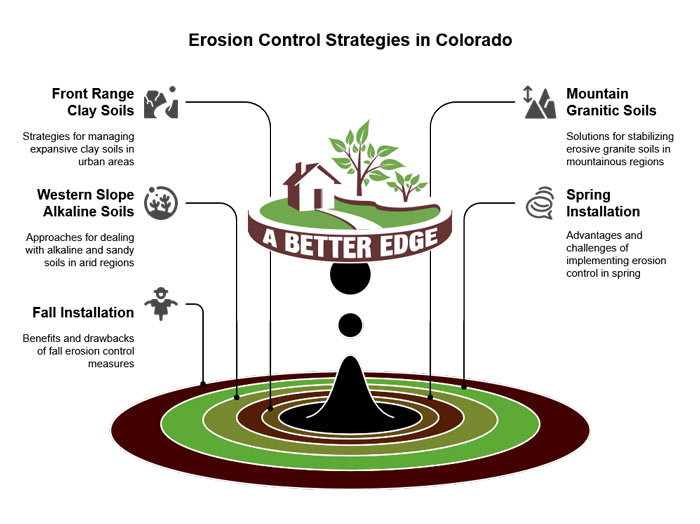
Seasonal Considerations
Colorado’s distinct seasons require thoughtful timing for erosion control implementation:
Spring Installation Advantages:
- Natural moisture helps establish vegetation
- Longer growing season ahead
- Can address winter damage promptly
Challenges:
- Potential for late snow events
- Ground may remain saturated in some areas
- Access issues in mountain regions
Fall Installation Advantages:
- Soil is typically more workable
- Less competition from weeds
- Structures can settle before spring runoff
Challenges:
- Limited time for vegetation establishment
- It may require more intensive erosion controls until spring
- Weather can change quickly, affecting installation
Advanced Techniques for Severe Erosion Problems
Biotechnical Solutions
For particularly challenging erosion sites, biotechnical approaches combine engineering principles with biological systems:
Live Staking is a technique that involves planting dormant cuttings of specific woody plants (typically willows in Colorado) directly into eroding slopes. These cuttings develop roots and shoots, creating a living erosion control system. Material costs are minimal, but proper installation expertise through professional landscape services is essential for success.
Brush Layering is similar to live staking but involves entire branches placed on small terraces cut into the slope. This method creates immediate physical stability while establishing living plant material for long-term erosion control.
Case Study: Clear Creek Riparian Restoration
Following significant bank erosion along a private stretch of Clear Creek, we implemented a combination of live staking and brush layering using native willow and dogwood species. Within two growing seasons, the site achieved over 90% vegetation coverage and successfully withstood a 25-year flood event with minimal damage.
Engineered Solutions for Extreme Cases
Some situations require engineered solutions to fix erosion problems effectively:
Soil Nailing is a technique for increasing stability by installing steel reinforcing bars into slopes. While typically used in civil engineering projects, residential applications have become more common for severe erosion situations.
Gabion Structures Wire-encased rock structures provide immediate stability while allowing for drainage and eventual vegetation establishment. These structures are particularly effective for areas with concentrated water flow.
Case Study: Larimer County Post-Fire Restoration
Following a destructive wildfire that left steep slopes vulnerable to catastrophic erosion, our landscape services team designed a comprehensive solution incorporating soil nailing, gabion check dams, and specialized hydroseed applications. Despite receiving over 5 inches of rain within the first month after installation, the system maintained slope integrity and allowed for successful revegetation in a highly challenging environment.
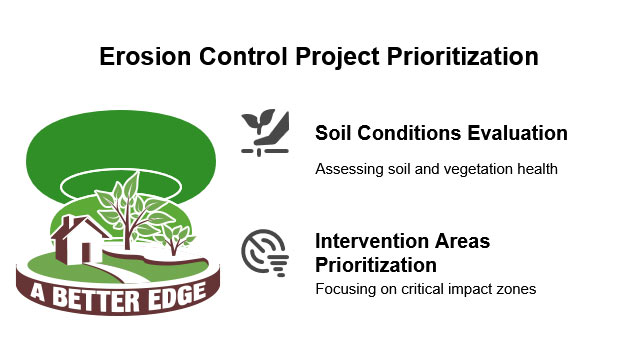
Planning and Implementing Your Erosion Control Project
Assessment and Prioritization
Effective erosion control begins with a thorough evaluation:
- Identify erosion patterns and causes
- Sheet erosion (uniform soil loss across the slope)
- Rill erosion (small channels forming)
- Gully erosion (deeper channels from concentrated flow)
- Shoreline erosion (along water bodies)
- Evaluate soil conditions
- Soil type and stability
- Existing vegetation
- Moisture patterns
- Signs of previous failure
- Prioritize intervention areas
- Areas threatening structures
- Locations with active gully formation
- Slopes showing progressive failure
- Areas impacting water quality
Regulatory Considerations
Before implementing any significant erosion control measures, check local regulations:
- Municipal permits may be required for retaining walls over certain heights
- County regulations often govern work near waterways or in sensitive areas
- State requirements for stormwater management during construction
- Federal oversight is possible in wetland areas or specific watersheds
Our landscape services team regularly navigates these regulatory requirements, ensuring compliant implementation while achieving effective erosion control.
Maintenance Requirements
Even the best erosion control systems require maintenance to function optimally:
| Solution Type | Maintenance Activities | Frequency | Approximate Annual Cost |
|---|---|---|---|
| Vegetative Systems | Weed control, supplemental seeding, occasional irrigation | 2-4 times annually | $1-3 per square foot |
| Retaining Walls | Inspection, drainage clearing, occasional repairs | 1-2 times annually | $0.75-2 per square foot |
| Water Management | Clear debris, check for blockages, inspect for damage | 2-4 times annually | $1.50-3 per linear foot |
| Combination Systems | All of the above, coordinated for system integrity | Varies by component | Varies by system |
Conclusion: A Proactive Approach to Fix Erosion
Colorado’s unique landscape requires specialized approaches to erosion control. By understanding your property’s specific challenges and implementing appropriate solutions, even severe erosion issues can be effectively addressed.
The most successful projects we’ve completed through our landscape services typically include these elements:
- Comprehensive assessment before design or implementation
- Multiple complementary techniques rather than relying on a single approach
- Phased implementation when appropriate to allow evaluation and adjustment
- Integration with overall landscape design for aesthetic and functional harmony
- Regular maintenance scheduled from the beginning
Erosion control invests your property’s long-term value and environmental health. Professional landscape services that understand Colorado’s unique challenges can help you fix erosion problems effectively while enhancing your property’s beauty and functionality.
For more information about fixing erosion problems on your Colorado property, contact A Better Edge for a consultation tailored to your situation. Our experienced team provides comprehensive landscape services focused on sustainable, practical solutions for even the most challenging erosion control projects.
More info can be found on the Justia U.S. Law: 2023 Colorado Revised Statutes, Title 35 – AGRICULTURE (§§ 35-1-101 — 35-81-102)




